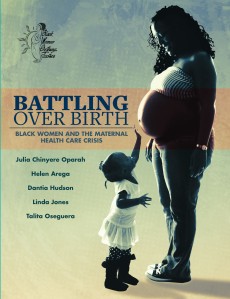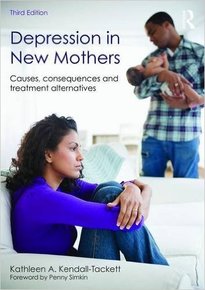Kathleen Kendall-Tackett, PhD, IBCLC, FAPA
Inflammatory rhetoric aside, is there anything to learn from Fed is Best?
I recently read an upsetting blog post on Forbes.com: Fed Is Best Foundation Says WHO Breastfeeding Guidelines Fail To Meet Human Rights Standards. According to this article, babies were starving because of the Baby-friendly Hospital Initiative (BFHI). By “imposing” BFHI on families, the breastfeeding community was violating families’ human rights. It further stated that there was no evidence to support BFHI. In fact, BFHI was a public-health emergency. Policymakers need to do something right now!
 Fed Is Best has no research to support its claims, but it has stories of babies who had problems. These are important, but an anecdote is not evidence. (In contrast, a quick search on PubMed yielded almost 800 studies on the BFHI.) However inflammatory the rhetoric, I cannot dismiss Fed is Best completely out of hand. Fed is Best has identified some areas where service to mothers could improve. Let’s examine some of those issues and consider the history of the BFHI.
Fed Is Best has no research to support its claims, but it has stories of babies who had problems. These are important, but an anecdote is not evidence. (In contrast, a quick search on PubMed yielded almost 800 studies on the BFHI.) However inflammatory the rhetoric, I cannot dismiss Fed is Best completely out of hand. Fed is Best has identified some areas where service to mothers could improve. Let’s examine some of those issues and consider the history of the BFHI.
Baby-friendly Hospital Initiative
 The BFHI was launched worldwide following the 1991 Innocenti Declaration. The goals were originally aspirational. UNICEF’s Executive Director, James Grant (UNICEF, 2003) asked practitioners with expertise in breastfeeding and child survival what factors would increase breastfeeding rates worldwide.
The BFHI was launched worldwide following the 1991 Innocenti Declaration. The goals were originally aspirational. UNICEF’s Executive Director, James Grant (UNICEF, 2003) asked practitioners with expertise in breastfeeding and child survival what factors would increase breastfeeding rates worldwide.
The BFHI aims to promote baby- and mother-friendly maternity facilities to encourage, respect, and support each mother’s informed choice of mode of feeding and caring for her infant(s) and to ensure exclusive breastfeeding in the hospital and beyond (Cox, 2010).
The goal was to increase infant survival, and the original 10 Steps evolved from this discussion and the Innocenti conference. Since that time, the 10 Steps have been updated as the science evolves. The 10 Steps are not set in stone, but are a living document. They will continue to change, while still being true to the original goals.
Challenges
Those sound like good goals. If that is the case, what is fueling the more strident anti-breastfeeding rhetoric? Here a few of the challenges I’ve identified.
 Rooming in. I recently read a post by someone who claimed that rooming in was unkind because it interferes with mothers’ sleep. This is why some hospitals still think nurseries are a good idea. So what are the issues here? Babies who room in have higher rates of exclusive breastfeeding (Labbok, Taylor, & Parry, 2013). Further, exclusively breastfeeding mothers get more sleep (Kendall-Tackett, Cong, & Hale, 2011).
Rooming in. I recently read a post by someone who claimed that rooming in was unkind because it interferes with mothers’ sleep. This is why some hospitals still think nurseries are a good idea. So what are the issues here? Babies who room in have higher rates of exclusive breastfeeding (Labbok, Taylor, & Parry, 2013). Further, exclusively breastfeeding mothers get more sleep (Kendall-Tackett, Cong, & Hale, 2011).
Why the contradiction? I think it’s a matter of simple mechanics. Babies in the U.S. who room in are laid to sleep in bassinets, rather than the lovely sidecars they have in some hospitals in the U.K. As Tully and Ball’s research has demonstrated, mothers breastfeed more when their babies are in sidecars rather than in bassinets next to the bed (Tully & Ball, 2012). The physical action required to get a baby from bassinet to mother’s hospital bed can be very difficult, especially for mothers who have had cesareans or assisted vaginal deliveries. They either need to get out of bed, or twist and pull to bring the baby to them. Ideally, they would have some help. But they may be alone in their room, and they’d need to completely wake up to complete this operation.
 Honestly, the mothers with babies rooming in are probably more tired. Some mothers report that rooming in seems cruel when they are exhausted. There are some safety concerns as well. Exhausted mothers may drop their babies as they try to grab them in the middle of the night.
Honestly, the mothers with babies rooming in are probably more tired. Some mothers report that rooming in seems cruel when they are exhausted. There are some safety concerns as well. Exhausted mothers may drop their babies as they try to grab them in the middle of the night.
We need to listen to these concerns. The answer is not to eliminate rooming in, but to make it easier for mothers to get their babies. Sidecars on hospital beds, or something similar, would be a supportive practice.
Early feeding and failure to thrive. Fed Is Best was founded because a mother had low production that no one identified, and her infant was harmed as a result. To address this, we must identify mothers at risk for low milk production. These include physiological and mechanical issues, such as insufficient glandular tissue (IGT), previous surgery or breast injury, or polycystic ovary syndrome (PCOS). Birth interventions are another potential factor that is far more common and thus concerning.

Depression and breastfeeding difficulties are fellow travelers: where you see one, you are likely to see the other. And both have been specifically linked to interventions such as synthetic oxytocin, epidurals, and pain medications (Kendall-Tackett, Cong, & Hale, 2015; Uvnas-Moberg, 2015). All of these interventions specifically block naturally occurring oxytocin, which impacts ability to breastfeed. In some cases, these interventions are necessary and/or are what families want. Parents are often told that these interventions have no negative effect. That is simply not true. As with any medical intervention, there are risks and benefits that need to be weighed. One of the risks is the potential for more breastfeeding problems.
These interventions can impact lactogenesis II (start of copious milk production) by blocking oxytocin. But those helping mothers postpartum need to strike a delicate balance. It is important not to communicate to mothers the idea that they will fail, which can easily be implied. Helpers can watch without communicating that they think they will fail.
Mothers can be empowered by learning how to know when they have enough milk. Keeping a simple diaper log is the easiest way. Mothers can make themselves crazy with trying to clock all the details, such as time at the breast, letdowns, foremilk/hindmilk, etc. Monitoring output (i.e., baby poop) is still the best way to keep track. Poop color won’t change if babies aren’t getting enough to eat. And if mothers have any concerns, they should be able to touch base with someone who can check.
 Lack of support. The 10th Step of the BFHI is that mothers will have support in the community. This is where I think we are the weakest. Mothers leave the hospitals and face a pastiche of breastfeeding support services. This system can be very difficult to navigate and mothers often flounder with lack of support. The sharp drop-off in exclusive breastfeeding rates suggests that this continues to be a significant problem.
Lack of support. The 10th Step of the BFHI is that mothers will have support in the community. This is where I think we are the weakest. Mothers leave the hospitals and face a pastiche of breastfeeding support services. This system can be very difficult to navigate and mothers often flounder with lack of support. The sharp drop-off in exclusive breastfeeding rates suggests that this continues to be a significant problem.
This is, in no way, a shot at the professionals and volunteers working to provide support. I meet them all across the U.S. and I know they are working as hard as they possibly can, often with very limited resources. When budget cuts come, lactation is often the first program that goes. I consider this more of a systemic problem. If we are serious about increasing exclusive breastfeeding past the hospital stay, and doing it in a way that is safe for mothers and babies, our institutions and health organizations need to commit the resources to make sure it’s possible. That means money! There are some communities where this is happening, so I know it’s possible. Let’s make it happen for all mothers.
Listening to mothers. The most successful implementation of BFHI policies has occurred where there is community buy-in. Then mothers feel like they are part of the process and that these goals have not been imposed from the outside. Where mothers struggle in pain, with faltering milk production, and no one listens, of course they are frustrated.

Mothers’ concerns are important. Perhaps as we move to the next phase, we can incorporate mothers’ feedback about what they perceive as the challenges. Let’s also make sure our hospital practices are mother-friendly as well as baby-friendly. That may limit the use of birth interventions that impede breastfeeding and make the hospital a safer place for mothers to be. Some studies have incorporated mothers’ perspectives. But there is enough information floating around on social media to suggest that we might be missing some things that mothers find important. Let’s think about how we can incorporate this feedback.
In my opinion, Fed Is Best has not accurately characterized the work of the breastfeeding community. But this organization would not have taken off if it wasn’t tapping into some discontent. Let’s set aside our ire and use this as an opportunity to improve practice.
Thanks to any of you who are working with mothers and babies. You are making a difference every day.
References

Cox, S. (2010). Altering hospital maternity culture: Current evidence for the Ten Steps to Successful Breastfeeding. Amarillo, TX: Praeclarus Press.
Kendall-Tackett, K. A., Cong, Z., & Hale, T. W. (2011). The effect of feeding method on sleep duration, maternal well-being, and postpartum depression. Clinical Lactation, 2(2), 22–26. doi:10.1891/215805311807011593
Kendall-Tackett, K. A., Cong, Z., & Hale, T. W. (2015). Birth interventions related to lower rates of exclusive breastfeeding and increased risk of postpartum depression in a large sample. Clinical Lactation, 6(3), 87–97. doi:10.1891/2158-0782.6.3.87
 Labbok, M., Taylor, E., & Parry, K. (2013). Achieving exclusive breastfeeding: Translating research into action. Amarillo, TX: Praeclarus Press.
Labbok, M., Taylor, E., & Parry, K. (2013). Achieving exclusive breastfeeding: Translating research into action. Amarillo, TX: Praeclarus Press.
Tully, K. P., & Ball, H. L. (2012). Postnatal unit bassinet types when rooming-in after cesarean birth: Implications for breastfeeding and infant safety. Journal of Human Lactation, 28(4), 494–505. doi:10.1177/0890334412452932
UNICEF. (2003). James P. Grant biography. Retrieved from https://www.unicef.org/about/who/index_bio_grant.html
Uvnas-Moberg, K. (2015). Oxytocin: The biological guide to motherhood. Amarillo, TX: Praeclarus Press.
 Kathleen Kendall-Tackett is a health psychologist, International Board Certified Lactation Consultant, and the owner and Editor-in-Chief of Praeclarus Press, a small press specializing in women’s health. She is Editor-in-Chief of two peer-reviewed journals: Clinical Lactation and Psychological Trauma. She is Fellow of the American Psychological Association in Health and Trauma Psychology, Past President of the APA Division of Trauma Psychology, and a member of the Board for the Advancement of Psychology in the Public Interest. Dr. Kendall-Tackett specializes in women’s-health research including breastfeeding, depression, trauma, and health psychology. She has won many awards for her work including the 2016 Outstanding Service to the Field of Trauma Psychology from the American Psychological Association’s Division 56. Her websites are: UppityScienceChick.com, BreastfeedingMadeSimple.com, KathleenKendall-Tackett.com, PraeclarusPress.com. And see: Google Scholar.
Kathleen Kendall-Tackett is a health psychologist, International Board Certified Lactation Consultant, and the owner and Editor-in-Chief of Praeclarus Press, a small press specializing in women’s health. She is Editor-in-Chief of two peer-reviewed journals: Clinical Lactation and Psychological Trauma. She is Fellow of the American Psychological Association in Health and Trauma Psychology, Past President of the APA Division of Trauma Psychology, and a member of the Board for the Advancement of Psychology in the Public Interest. Dr. Kendall-Tackett specializes in women’s-health research including breastfeeding, depression, trauma, and health psychology. She has won many awards for her work including the 2016 Outstanding Service to the Field of Trauma Psychology from the American Psychological Association’s Division 56. Her websites are: UppityScienceChick.com, BreastfeedingMadeSimple.com, KathleenKendall-Tackett.com, PraeclarusPress.com. And see: Google Scholar.























November 5, 2017 at 10:24 pm
Those citations are bullshit! Either it’s an article she authored or a book published by her personal press, so it’s not at all outside conformation of her ideas. I don’t think those journals are unbiased, either. I’d be more impressed if she could cite outside work from respected major publications. As it is, I think thet whole thing is just unsupported ideas.
LikeLike
November 6, 2017 at 10:17 am
Have you ever put a nasogastric tube down a starving baby. When you have, might be interested in your badly researched article.
LikeLike
November 6, 2017 at 9:41 pm
Great, balanced article. Considerate of all while flagging things that could be improved. Sadly the FIBers will dismiss everything you say as lactivism. Such a shame as you offer excellent points which could be campaigned for and help women families and babies so much. Thanks for the level headed read.
LikeLike
November 7, 2017 at 4:25 pm
Shared on my FB page. Thanks for the balanced read.
LikeLike